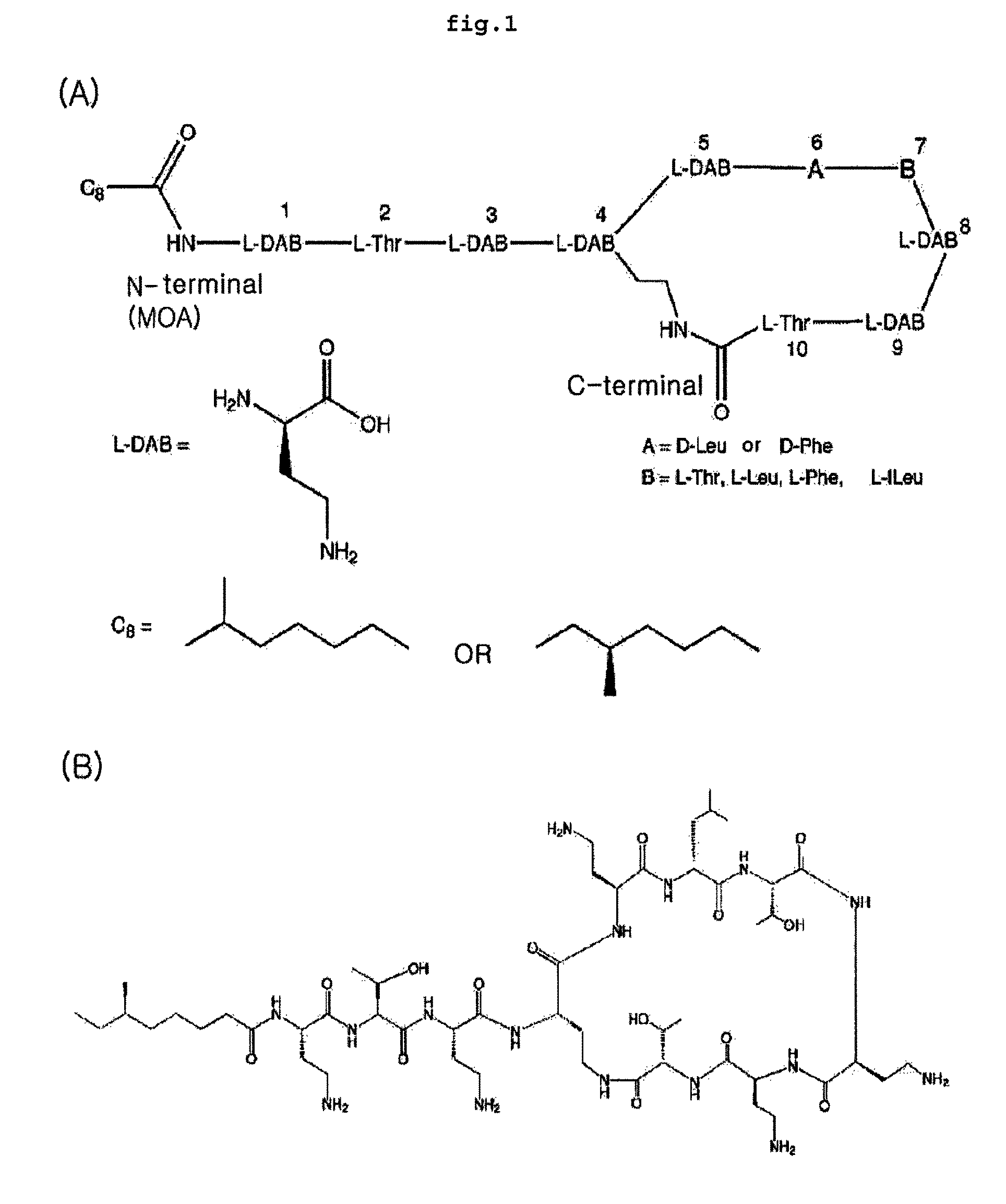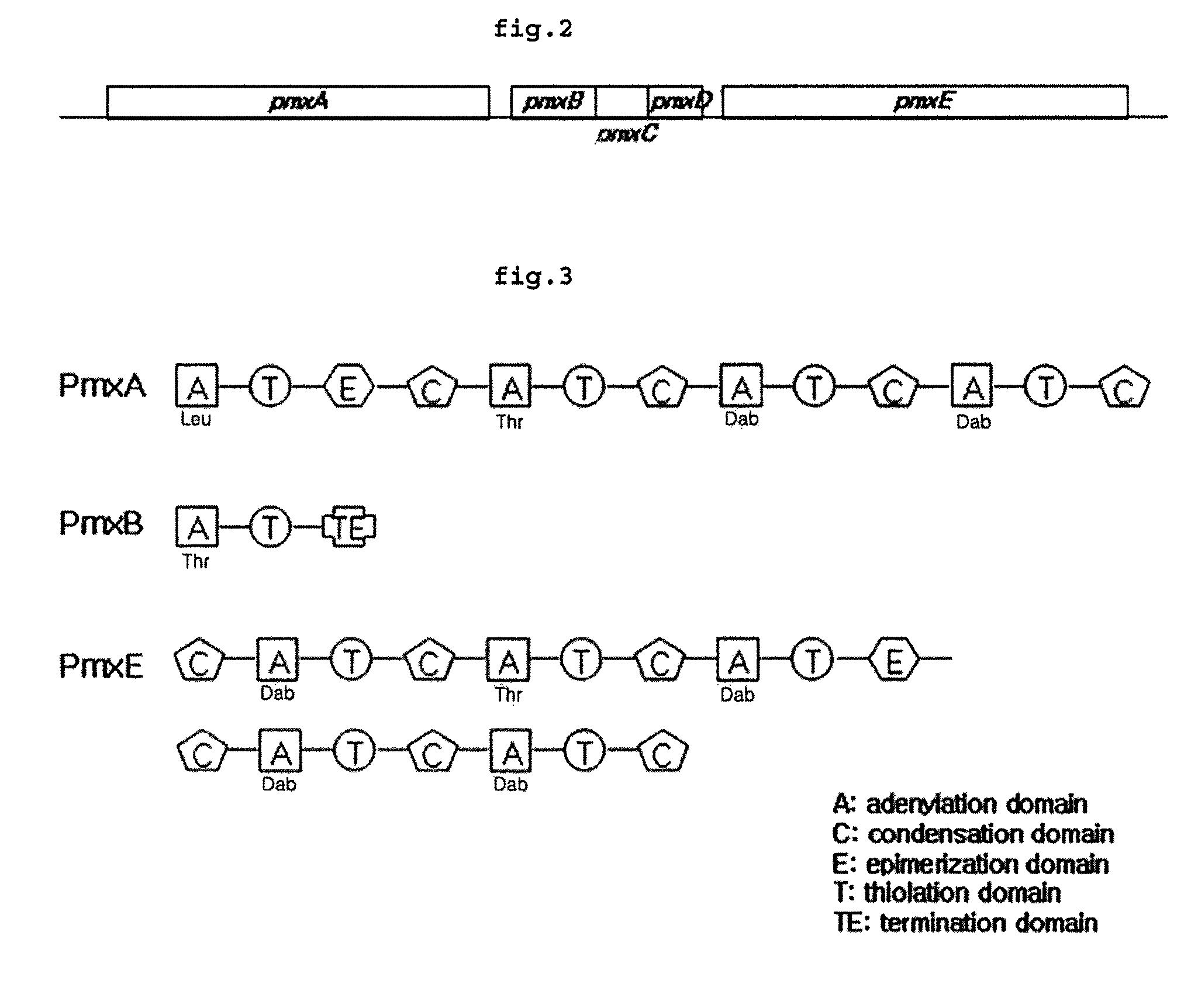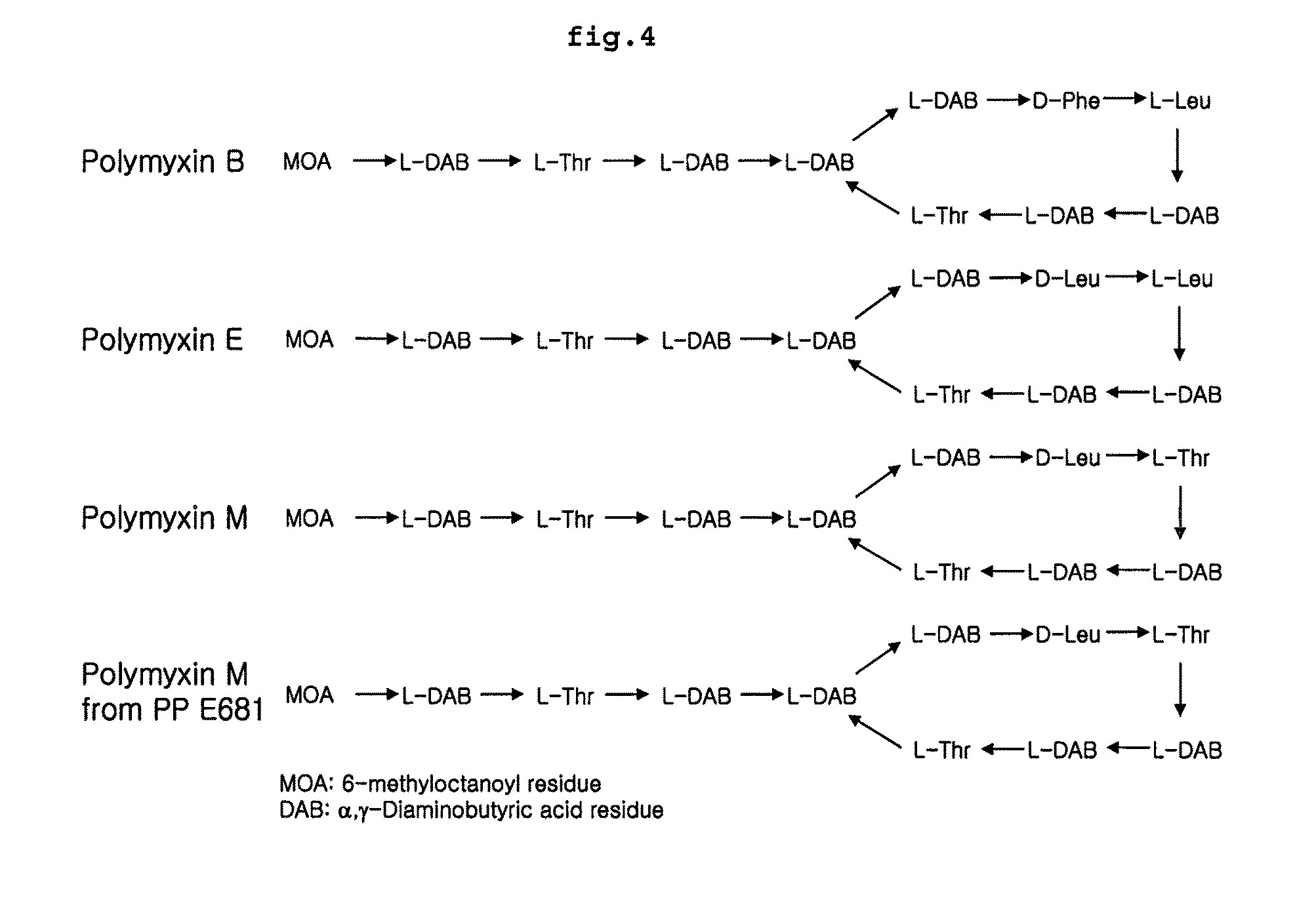Polymyxin synthetase and gene cluster thereof
a technology of polymyxin and synthetase, which is applied in the field of polymyxin synthetase and the gene cluster thereof, can solve the problems of severe side effects, fever, eruption and pain, and inducible severe neurotoxicity
- Summary
- Abstract
- Description
- Claims
- Application Information
AI Technical Summary
Benefits of technology
Problems solved by technology
Method used
Image
Examples
example 1
Isolation and Analysis of Polymyxin from Paenibacillus polymyxa
Culture of Paenibacillus polymyxa
[0090]Paenibacillus polymyxa E681 was cultured in the medium designed by Paulus and Gray (Paulus H and Gray E. 1964, J. Biol. Chem. 239:865-871) under aerobic condition at 25° C. with 180 rpm for 3 days, followed by centrifugation (7000 rpm, 10 min) to separate supernatant.
Identification of Polymyxin by LC / MS Analyzing System
[0091]The composition of the supernatant was analyzed by LC / MS system.
[0092]LC / MS was performed using high pressure liquid chromatography system provided by Thermo Electron Co. (USA) and ion spectrometer. The sample proceeded to reversed-phase column (YMC Hydrosphere C18 column) and analyzed in a mixed solvent of acetonitrile and water containing 0.1% formic acid (0.2 ml / min).
[0093]As a result, (M+H)+ ion peak was 1158, and the actual molecular weight was confirmed to be 1157, which is the same molecular weight of the conventional polymyxin M.
[0094]To confirm if t...
example 2
Sequencing of Polymyxin Biosynthesis Gene
[0095]The nucleotide sequence of Paenibacillus polymyxa E681 genome was completely sequenced by whole-genome shotgun sequencing strategy and then the polymyxin biosynthetic gene cluster was identified.
Library Construction
[0096]Paenibacillus polymyxa E681 was cultured by the same manner as described in Example 1, and chromosomal DNA was extracted by the method described in Genome Analysis, A laboratory manual Vol. III Cloning systems (CSHL Press, Cold Spring Harbor, N.Y., USA), and the DNA was fragmented to construct a shotgun library for sequencing.
[0097]The high molecular chromosomal DNA fragmentation was performed with VCX-500 ultrasonicator (Sonics, Newtown, Conn., USA) with 19% strength, 0.3 / 3 sec of pulse on / off time, 6 times. The DNA fragments of 2 kb, 5 kb, 8 kb and 10 kb in size were recovered and used to construct the library. pUC18, pUC19, pUC118 or pBCKS (Stratagene, La Jolla, Calif., USA), and pTrueBlue (Genomics One (Laval, Queb...
example 3
Prediction of Polymyxin Structure from the Nucleotide Sequence of Polymyxin Biosynthesis Gene
[0108]The polymyxin biosynthesis gene of the present invention was analyzed based on the chart showing the substrate specificity associated active amino acids summarized by Challis et al (Challis G. L. et al., 2000. Chem. Biol. 7: 211-224). As a result, the gene was confirmed to be organized by such domains as pmx A, pmx B and pmx E, as shown in FIG. 3. Each A domain recognized amino acids such as DAB, Leu and Thr. The amino acid sequence of each domain was determined and the SEQ. ID. NO. corresponding to each domain is shown in Table 1.
[0109]
TABLE 1Domainpmx Apmx Bpmx EA 8, 15, 20, 263239, 44, 50, 57, 62T10, 17, 22, 283441, 46, 52, 59, 64C14, 19, 24, 3038, 43, 48, 56, 61, 66E1254TE36
[0110]As shown in FIG. 4, the predicted polymyxin structure was confirmed to be that of polymyxin M, which was consistent with the result of Example 1.
PUM
| Property | Measurement | Unit |
|---|---|---|
| concentration | aaaaa | aaaaa |
| concentration | aaaaa | aaaaa |
| concentrations | aaaaa | aaaaa |
Abstract
Description
Claims
Application Information
 Login to View More
Login to View More - R&D
- Intellectual Property
- Life Sciences
- Materials
- Tech Scout
- Unparalleled Data Quality
- Higher Quality Content
- 60% Fewer Hallucinations
Browse by: Latest US Patents, China's latest patents, Technical Efficacy Thesaurus, Application Domain, Technology Topic, Popular Technical Reports.
© 2025 PatSnap. All rights reserved.Legal|Privacy policy|Modern Slavery Act Transparency Statement|Sitemap|About US| Contact US: help@patsnap.com



